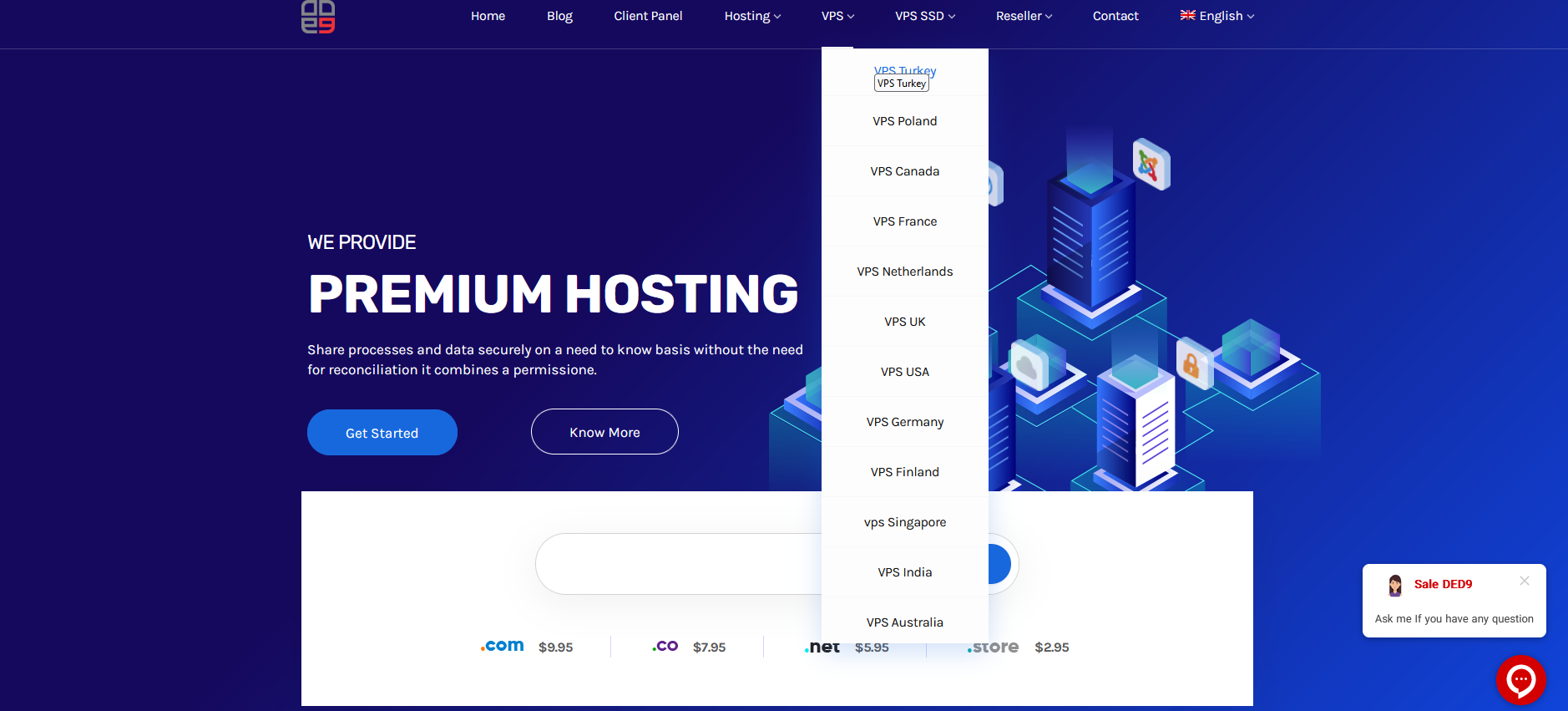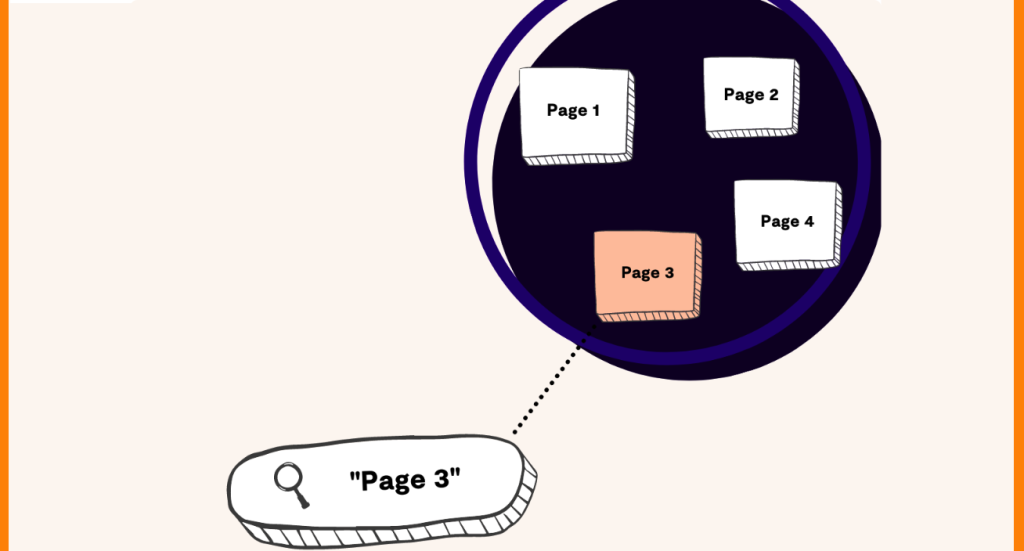What is the Structure of the Site? Types of common site Design Structures
You might think the site’s structure is only essential for external attractiveness and attracting users’ attention, but this is not the case. Site structure is a vital aspect of SEO strategies because the structure of your website tells search engines which pages are most important and valuable.
The optimal site structure can bring you the traffic and rank you want. You categorize its elements intelligently and choose the best option from hierarchical, linear, matrix, and database structures.
The purpose of a website is to provide valuable information in an accessible way. When you distribute this information on your website’s internal pages, you are defining the architecture of your website for search engines and users. This is where categorizing and linking your website pages becomes essential.
If you can design the site structure carefully, you will succeed in turning a random set of pages into a website that users and search engines like. Creating an orderly system and hierarchy of your business information so users and search engines can easily find relevant information will generate this interest.
The rules for creating an optimal and high-quality structure will help you walk this path more confidently. If, in addition to the optimal website structure, you get a powerful server to launch the website and handle requests, you can be sure that you will have a strong SEO foundation for the growth of your business, which is ready to provide valuable services to users at any moment.
There is no need to worry because, in this article, we provide you with all the necessary guidance about the site structure, but if you are looking for a powerful server, you can visit our virtual server purchase page:
Table of Contents
- What is meant by site structure?
- Why is site structure important?
- Essential elements of the site structure
- Types of website design structure
- Important and step-by-step tips for creating a great site structure
What is meant by site structure?
Site structure refers to how site content is organized. Suppose you can arrange the pages and posts of your website so that users can find their way more easily using categories, tags, and internal links. In that case, you will satisfy users and help search engines index your website pages with more quality and accuracy.
Maybe your website has little content at the beginning of the work period, and there is no need to organize its structure, but the more your site grows and the number of posts and pages is added, the more cluttered it becomes. This is where your site structure becomes essential.
If you can’t structure your website correctly, your audience will get lost in your content and leave your website dissatisfied. The same dissatisfaction happens to the search engine, and these negative signals work hand in hand to lower the rank of your pages.
Why is site structure important?
There are many reasons why website structure plays a vital revitalizing the growth of your business. Let’s get acquainted with the most important of them:
Improve user experience
When search engines value the needs and satisfaction of users so much, especially Google, which seeks to obtain maximum user satisfaction by developing algorithms such as Helpful content, you should also think about creating an optimal website structure to provide visitors with the information they need and make it easier to move to other search-related pages.
By improving user experience, your chances of services are higher, reaching potential customers and increasing sales of products/services increase. Conversely, a bad user experience can wipe out all your gains.
In general, if your website is informative and attractive and the navigation is effortless, users will want to spend more time on your website, and this will reduce the bounce rate. The longer an excellent stays on your website, the more Google realizes that your website is a fantastic result for the desired search term. For this reason, it has started working to increase the fansite’s structure pages.
Better search engine guidance
By examining the essentials of the site, search engines get clues about the most necessary and critical content. So it would help if you tried to organize the content so that search engines can easily understand what field your site operates in.
Imagine entering a house for the first time. At the very first moment, you don’t know where the rooms are located, but over time, by walking around the house, you will understand how the architecture of the website is. But if you notice the gas stove when you enter the bedroom, which should be in the kitchen, you will be a little confused.
Yes, this is precisely the reaction of search engines when encountering a messy site. If the structure of your site is messed up and its internal linking is not done well, they will not notice the relevance and importance of your site pages.
Better site content management
Keeping track of website content and identifying duplicate content and essential pages will be much easier if you have a regular structure.
Also, a neat site prevents pages and blog posts from becoming competitive. The connection you can make between the content helps fulfill the user’s search goals, and they work hand in hand to retain the user without overlapping or conflicting.
Another critical point is that with the proper design of your website structure, you can sort the content based on priority and importance so that the search engine will notice this importance. In this way, you will avoid the unnecessary competition of your posts with Hamadgir and focus on your primary goal: getting a high rank in search results.
Essential elements of the site structure
A well-structured website relies on several essential elements that all work hand in hand to help organize, navigate, and create an enjoyable user experience. In this section, we mention some of the most important ones:
Main Page

The home page is the main center of the website through which all the sections of the website are directed. When designing the structure of your site, you must include links to all important pages. Relationships between the home page, menu categories, and navigation bars are essential for users to identify the path.
Categories and subcategories

You will not put all your content and products on the home page to give users a cluttered and cluttered welcome page. Categories are the foundation of organizing your site structure and grouping similar pages so users can easily find the content they need.
Of course, large sites with many categories can divide their categories into subcategories so that the user can take a shorter path to reach the desired page.
Using categories improves navigation, reduces orphan pages, and increases internal links, all helpful in creating an orderly and logical structure.
Navigation or Navigation
![]()
Website navigation maps the content path visitors require and defines the site’s structure for them. A user looking for the category and page needs a guide, a classic header at the top, a pull-down menu, or a minimalistic hamburger menu.
All these menus are designed to show more attractive links related to the subcategory pages so the user can move to the desired page in the most transparent and best possible way.
Linking system
Optimum use of a linking system ensures that your users follow their path correctly. In addition to the links you put in your categories and subcategories, other links improve the user experience:
CTAs or call-to-action links are strategic links that lead visitors to a direct goal. Purchase or registration links are CTA, designed using attractive buttons, texts, and colors.
Internal links refer to the website links included within the pages or posts. Every site has internal links. Suppose you have a proper organization and establish the connection between the links according to their thematic connection. In that case, you will include an essential part of SEO in your site because by doing this, you will help search engines discover and index your pages more efficiently and better.
External Links With these links, you can direct visitors to pages on other websites to find information and a clearer understanding of their path and discover content related to their search through your site.
URL structure
The URL structure is also a part of your site structure, so if you go ahead according to the titles of categories and subcategories and instead of dumb and confusing characters, write a meaningful slag at the end of the page URL address, crawlers and users will understand the content of the page better.
First, activate the SSL certificate so that the HTTPS security prefix is placed at the beginning of the URL structure and users click on the link of your page with more confidence, then create short and meaningful URLs so that the user sees the connection and understands what page he is going to face.
External Links With these links, you can direct visitors to pages on other websites to find information and a clearer understanding of their path and discover content related to their search through your site.
Breadcrumb

Although this element is not as important as other elements, Breadcrumbs show the user where he is on the website. More straightforward navigation of pages and more accessible returns to previous sections are the most important advantages of using these elements. Also, search engine bots can understand the site’s hierarchy by checking Breadcrumbs and advance the crawling and indexing process more accurately.
Sitemap
A sitemap is a document that lists all essential pages, categories, and posts on a site and helps crawlers discover new content more quickly and efficiently.
Tags
Tags are used to group similar content on a website. You might think that categories do the same thing, so why do we need tags? The only difference between categories and tags is that categories are usually divided into subcategories. Still, tags are used only to group similar content, and categories and subcategories are not mentioned.
Now that we have reviewed the main elements of the site structure, it is time to get acquainted with the types of systems:
Types of website design structure
There are various website design structures, each with its pattern and features. By examining these patterns, you will understand which systems are suitable for which types of websites. So let’s get started:
1. Hierarchical model
This model is the most popular top-down site structure, and everything starts from the home page. Then different categories and pages enter the site architecture as a subsection of the main page, and this hierarchy continues from public pages to dedicated pages.

The versatility and simplicity of the hierarchical structure have made this model suitable for all types of websites (from personal services to online stores).
This model is also known as the tree model, and if you design the main page, main category pages, subpages, and subpages and establish links between them, its tree mode will be visible. In general, until you connect these pages and subpages using internal links, search engine algorithms will not be able to recognize this hierarchy, so you should think of an intelligent linking system so that search engines can understand the importance and relevance of the pages.
Helping to manage content efficiently, adding new pages and subcategories more quickly, and providing a clear path for search engine algorithms are among the essential advantages of this site structure.
2. Sequential or linear model
The sequential site structure makes users go through a step-by-step journey to reach their goals. Like the hierarchical model, this page starts from the main page and lists several pages or categories. Considering that the path to the pages is step-by-step, the users’ path becomes long and tedious if the number of pages and content is significant. For this reason, the sequential model is suitable for websites whose content and pages are few and controllable.

So, if you need a website with few subcategories or child pages, and your work starts with a home page or a landing page, this model is the best option for you. Users who enter your website get the information they need in a logical sequence and are directed to the prominent parts of your website through a predefined path.
An example of sequential site structure: Growth Design

3. Matrix model
Although the matrix is one of the oldest tris structures, it remains popular. This site structure is implemented so visitors can reach what they want without having to browse the categories and not have a long and challenging journey. Although the matrix structure may seem a little chaotic and crowded to you, this structure has the meaning of freedom for your visitors.

Although your website has special categories and subcategories, with the matrix model, you no longer need to adjust the order of their appearance for the user. Instead, it would help if you considered setting up a solid linking system and adapting the navigation features and search bar more accurately and sensitively.
The goal of this model is to minimize the number of clicks. So, by designing your website with a matrix structure, you allow users to reach their desired pages and content according to their needs and as they want.
An example of a matrix site structure is: the New York Times

4. Database model
This site structure uses a bottom-up approach and is suitable for websites that offer dynamic and personalized experiences. The user on this website usually has to enter their personal details, questions, and preferences to store this information in an internal or external database and present it to the user using specific pages.

Using a dynamic approach, the database model enables rapid and targeted content storage, retrieval, and manipulation. So the main focus of this model is on the classification and organization of content related to the users themselves.
An excellent example of this site architecture model is banking websites, where you access your bank account information after logging in. This way, the data is extracted from a database and displayed for you.
An example of a database site structure: codezeroyachts

Important and step-by-step tips for creating a great site structure
- Check how the pages are categorized and the relationship between the different sections of the competitors’ sites.
- Collect and categorize keywords suitable for your business.
- Create and categorize your pages based on keywords.
- Use short, preferably one-word, phrases for your categories.
- Categorize each page so that it can be accessed with three clicks.
- The names of the categories should not be confusing or repetitive.
- Remove duplicate content in different URLs.
- Constantly review and update duplicate information and content.
- Create a short yet clear URL structure for your page addresses.
- Connect website pages using internal links.
- Use relevant and understandable anchor texts for your links.
- Add more links to important and valuable pages on your website.
- Include a simple navigation menu for the home page.
- Preferably put the menu at the top so that it is accessible.
- If you use the drop-down menu, depending on the language of the site, place the drop-down menu on the right side.
- Design menus to be accessible on both desktops and mobile phones.
- Use breadcrumbs to navigate users more efficiently.
- Create a sitemap for easy navigation and interaction with all pages.
- Test the performance of your site.
- …
Conclusion
An optimal and correct site structure can bring you to your desired position. The fact that the form of a site is accurate and optimal does not depend only on a simple and attractive appearance. Links and short and comprehensible paths are the most critical factors in creating a suitable structure, all of which you should consider with high precision and sensitivity. Each system we reviewed in the article is ideal for certain businesses. You can choose the right option depending on the type of your business.
Thank you for staying with us until the end of the article. We hope that reading this article was helpful for you. If you have any questions or requests and need guidance, you can contact us by registering your opinion so we can answer you as soon as possible.

